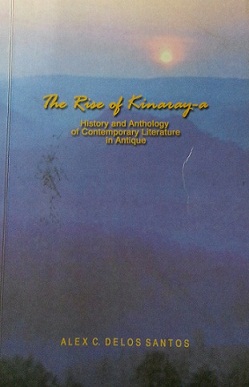 There are issues about the K-12 program being implemented by the Department of Education but the one good thing about it is the use of the mother tongue or native dialect as medium of instruction for the first years in school. That means from Kindergarten to Grades 1 to 3.
There are issues about the K-12 program being implemented by the Department of Education but the one good thing about it is the use of the mother tongue or native dialect as medium of instruction for the first years in school. That means from Kindergarten to Grades 1 to 3.
In a country, where many equate speaking English, however badly, with intelligence and class, the use of the mother tongue as medium of instruction in early education was a bold step to right a wrong policy.
The new policy was based in various studies that the use of the language spoken at home during early years of schooling produces better and faster learners who can easily adapt to learn a second language (Filipino) and third language (English).
The implementation of this policy is daunting considering that the Philippines has 181 documented languages. Producing learning materials for would require a lot of resources and time.
An Inquirer report said that The DepEd used 12 major languages when it introduced the mother tongue based-multi-lingual education (MTB-MLE) last school year namely Tagalog, Kapampangan, Pangasinense, Iloko, Bikol, Cebuano, Hiligaynon, Waray, Tausug, Maguindanaoan, Maranao and Chabacano.
Last week, Education Secretary Br. Armin Luistro ordered the use of seven more local languages namely Ybanag for Cagayan and Isabela provinces and Tuguegarao City; Ivatan for the Batanes group of islands; Sambal for Zambales; Akianon and Kinaray-a for Aklan and Capiz provinces; Yakan for Basilan province; and Surigaonon in the Surigao provinces and Surigao City.
Writer Alex de los Santos, author of the book, “The Rise of Kinaray-a” welcomed Secretary Luistro’s order but noted that an important information was lacking in the Inquirer article.
He said in his Facebook status: “A triumph for Karay-a writers and educators. But the article is not so precise; it overlooks Antique as the home-base of Kinaray-a.”
In De los Santos’ book which covers the “History and Anthology of Contemporary Literature in Antique”, Kinaray-a is defined as one of the minor languages classified under the Austonesian/Malay-polynesian lineage. It is the language spoken in most of West Visayas. It is spoken in all of Antique, parts of Aklan and Capiz, most of Iloilo, and even in Negros Occidental where the biggest number of sakadas, seasonal workers in the haciendas, is Karay-a from Antique.
De los Santos said it is difficult to pin down the origin of Kinaray-a. “It is the language spoken by people of the Iraya, the place away from the sea, or put it another way- the mountains.”
He said it is in contrast with Hiligaynon, the language spoken by people in Iloilo and Negros, which comes from the root word “ ilig” which means to flow as in a river.
De los Santos did extensive study on Kinaray-a and Hiligaynon and his conclusion was “Kinaray-a is the original language and Hiligaynon the “corrupted” language, as a result of the speech deficiencies of the Chinese merchants and the Spanish priests, and the loan words from Spanish, Cebuano, Bikol and Waray introduced by the friars.
He quoted scholar Santiago Alv. Mulato who wrote: “Kinaray-a was not adulterated because like a jar already full of water, a drop from above could not add to it anymore.”
This aspect of Kinaray-a is interesting and re-assuring for an Antiqueña like me because we have always felt interior beside Ilonggos. There were many of us from Antique who would speak Ilonggo because were ashamed of Kinaray-a and being from Antique, known then as the land of the sakadas.
That was decades ago and Antique has moved forward.
The use of Kinaray-a as medium of instruction in Antique schools is another step forward.
Agree, simulan sa native tongue ang pag-aaral ng mga bata, siguradong hindi mawawala!
From Ritchie Pagunsan:
Bag-o ko lang nabasa ang article mo “A triumph for Kinaray-a advocates” sa http://www.ellentordesillas.com. Salamat sa pagpadayon mo duso nga gamitun kag ipabugal ang Kinaray-a.
Rugya run ako sa New York naga-obra, pero parehas kanimo, padayon man ako nga nagaulikid sa Kinaray-a. Gani nagtukod ako kang sangka grupo nga ginatawag Dungug Kinaray-a kang tuig 2006. Ginatuyo na kadya nga itib-ong ang Kinaraya-a paagi sa pagtipon, pagtingub, kag pagtipig kang panulatan sa Kinaray-a. Isara sa amun mga lihuk ang paghiwat kang paindis-indis sa pagsulat kag pagpasundayag kang sugidanun umpisa kang tuig 2007.
Ginaagda ta ikaw nga bisitahun ang atun website sa http://www.dungugkinaray-a.com. Bag-o lang nahuman ang website pero makita rugya ang pira sa mga obra sa Kinaray-a kang atun mga manunulat. Isara run rugya ang Kinaray-a nga bersyon kang “The Rise of Kinaray-a” nga “Ugsad kang Kinaray-a” ni Alex C. Delos Santos. May bug-os run nga kopya ang website garing ginpakamayad ko nga ipaggwa dya amat-amat agud hapus basahun.
Sa liwat salamat sa pagpasundayag mo kang Kinaray-a. Nagalaum kami nga raad isara kadya ka mga inadlaw makasulat kaw man kang blog nga Kinaray-a sa atun website.
Sa gihapon,
Ritchie Pagunsan
New York, USA